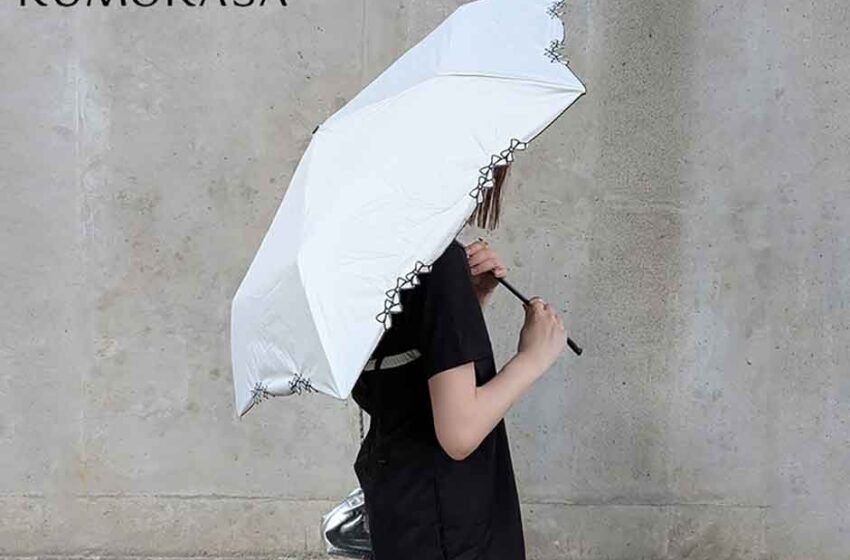Why Parasols Are the Secret to a More Elegant Japanese Summer?

Japan’s summer is beautiful — the fireworks festivals, yukata outings, and vibrant seasonal foods all create a rich tapestry of cultural experience. But it’s no secret: Japanese summers are also hot, humid, and sun-drenched. As UV indexes continue to rise and skin protection becomes more essential than ever, more people in Japan are turning to parasols — not just as a practical sunshade, but as a lifestyle statement.
In this article, we explore how parasols fit into the modern Japanese lifestyle and why they’ve become more than just a sun-blocking tool. From fashion to health and mindful living, here’s why carrying a parasol is the most elegant decision you can make this summer.
The Parasol Renaissance in Japan
Traditionally associated with elegance and femininity, parasols have made a quiet comeback — and not just among older generations. Today’s parasol users in Japan range from high school students to working professionals, drawn to minimalist designs, UV-blocking technology, and lightweight portability.
Unlike bulky umbrellas or hats that can mess with your hairstyle, modern parasols offer a refined way to stay cool and protected, often incorporating UV protection (UPF50+), heat-insulating layers, and even foldable, ultra-lightweight frames perfect for busy Tokyo commutes.
The resurgence also reflects a growing consciousness in Japan toward skin health and anti-aging practices. Sun protection is no longer just about avoiding sunburn — it’s about preventing premature aging, maintaining an even complexion, and protecting long-term health.
Why a Parasol Is a Lifestyle Essential — Not Just a Summer Tool
完全遮光日傘 aren’t merely a seasonal accessory. In Japan’s climate, especially from May to September, the sun is often relentless. But beyond UV protection, parasols bring unexpected lifestyle benefits:
1. A Tool for Mindful Living
Carrying a parasol slows you down — in a good way. It encourages a more intentional pace. Whether strolling through a temple garden or browsing an outdoor market, the act of holding a parasol can feel meditative. It turns a simple walk into a small ceremony of self-care.
2. Sustainable Shade, Anywhere
While city planners in Japan have made progress adding more shade to public areas, much of urban life still lacks protection from direct sunlight. Instead of constantly seeking cover, a parasol offers portable shade without reliance on infrastructure — and unlike sunscreen, it doesn’t need to be reapplied.
3. Fashion Meets Function
From frilled lace parasols to minimalist monochrome designs, parasols allow people to express personal style while staying sun-safe. They’re particularly popular in areas like Harajuku or Kyoto’s Gion district, where people match their parasols to their outfits for coordinated, Instagram-worthy looks.
Designing the Ideal Summer Routine with a Parasol
In Japan, summer is not a time to hide indoors. It’s a time for outdoor hanabi festivals, family beach trips, and weekend strolls in historical neighborhoods. Parasols fit seamlessly into these cultural activities.
Here’s how a parasol elevates your summer routine:
Morning walks in local parks (like Tokyo’s Yoyogi Park or Osaka Castle’s grounds): A parasol helps you enjoy the beauty without sweating under direct sunlight.
Cafe hopping in Kyoto’s historical districts: Instead of ducking into every shaded corner, use your parasol to enjoy the architecture and streetscape at your own pace.
Summer kimono/yukata coordination: Match your parasol to your attire for matsuri or fireworks events, where appearance is as celebrated as the festivities themselves.
The Shift Toward UV-Conscious Living in Japan
Japan’s focus on minimalism, skincare, and self-preservation aligns perfectly with the growing popularity of parasols. With more awareness around melanin damage, hyperpigmentation, and even heatstroke prevention, parasols are being seen as a necessary extension of everyday carry.
Even men are slowly beginning to embrace parasols in public, especially in progressive cities like Tokyo and Fukuoka. The stigma is fading, replaced by a practical attitude: Why suffer under the sun if a lightweight tool can make your day cooler and more pleasant?
Choosing the Right Parasol for Your Lifestyle
When selecting a parasol, it’s important to consider more than just appearance. Here are a few tips tailored to Japanese lifestyle needs:
Look for full UV protection (UPF50+): This ensures you’re shielded from 98%+ of harmful UV rays.
Choose a foldable, compact design: Especially important for commuters or travelers using Japan’s efficient (but often crowded) public transport.
Consider water-resistant options: Many modern parasols double as 雨傘 — an added benefit during Japan’s unpredictable summer showers.
Weight and grip: If you walk long distances, a lightweight handle and ergonomic design can prevent hand fatigue.
These small choices go a long way in ensuring that you don’t just own a parasol, but actually enjoy using it every day.
Conclusion: More Than Just Shade — It’s a Statement
In Japan, where seasonal awareness and thoughtful living are deeply embedded in the culture, the parasol fits perfectly into modern life. It is practical, stylish, eco-conscious, and deeply personal — a small item with a large impact on how you experience daily life in summer.
Whether you’re dressing up for a traditional festival, heading to work under the blazing sun, or simply enjoying an afternoon cafe stroll, a parasol gives you the freedom to move with ease, grace, and protection.
In a sun-drenched season like Japan’s summer, carrying a parasol isn’t just smart — it’s a lifestyle choice rooted in beauty and care.





